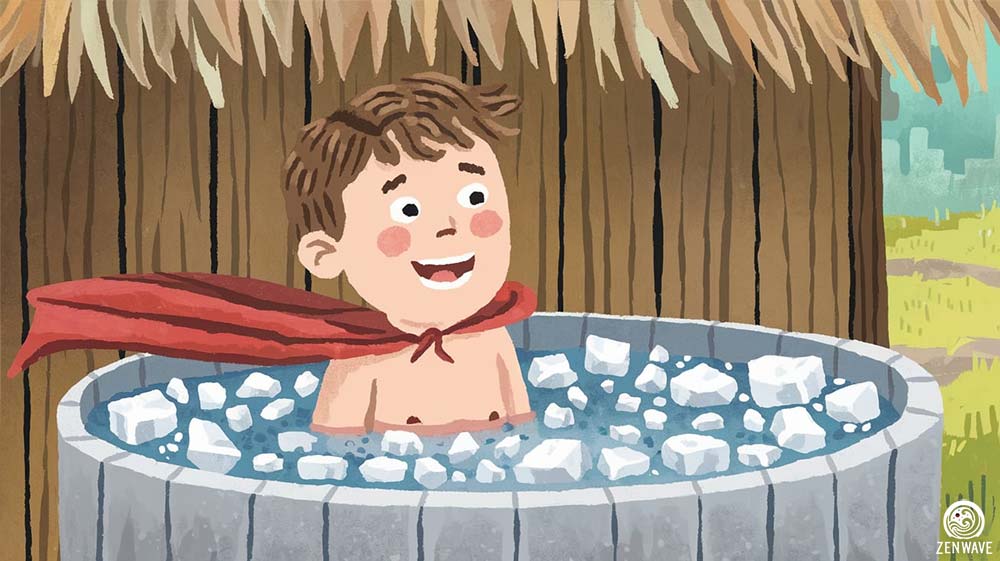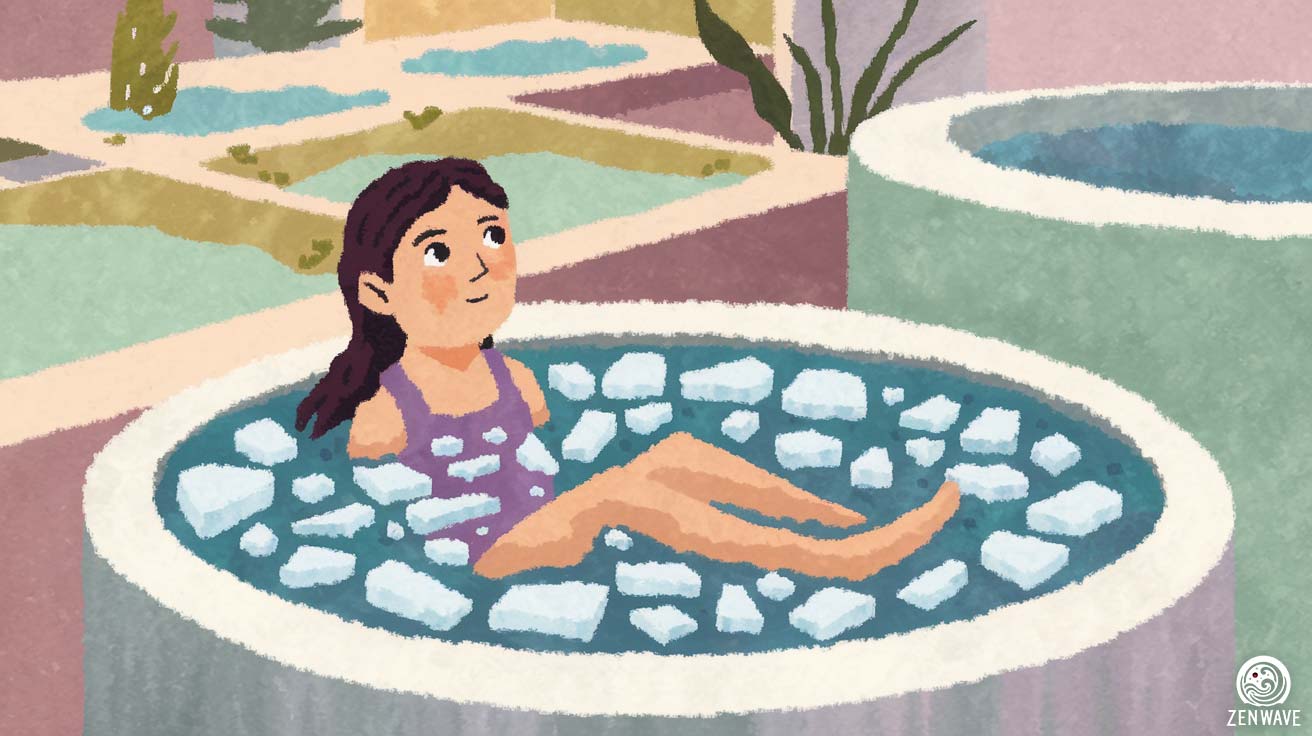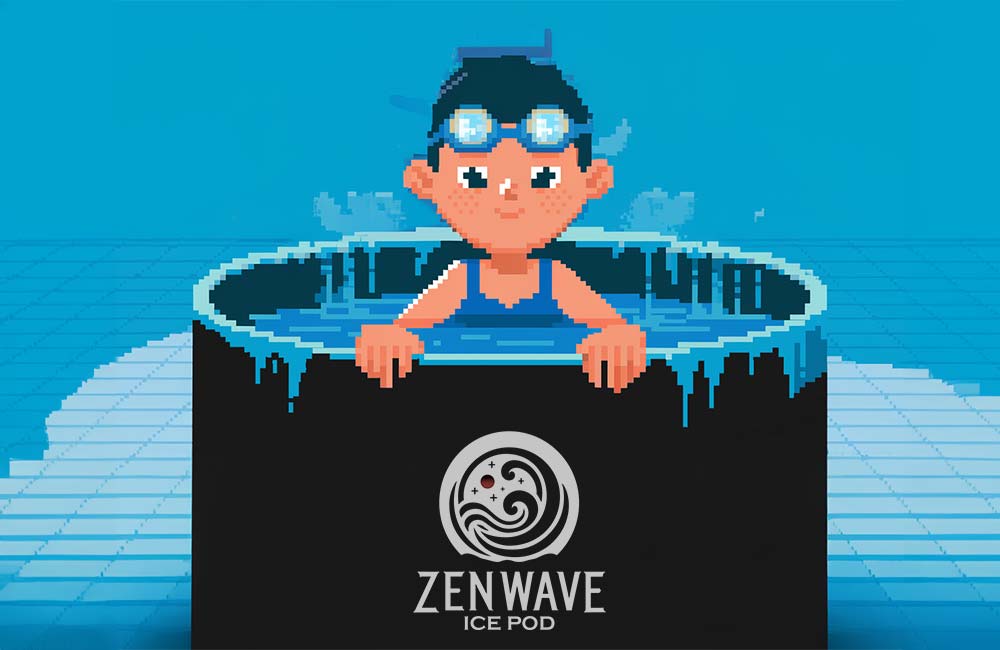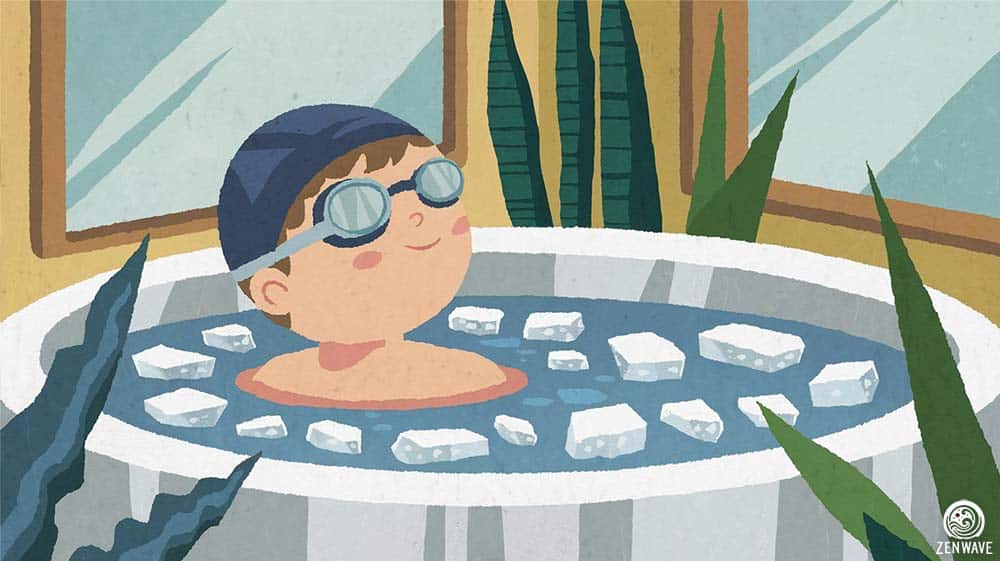Ice baths, when introduced responsibly, can be a powerful tool for fostering resilience and wellness in children. By observing and participating alongside their parents, kids can develop healthy habits and coping mechanisms that may serve them well throughout their lives.
For developing children, this practice offers several important benefits. It can help build mental resilience by teaching kids to face challenging situations calmly. Cold exposure may also aid in regulating stress responses, potentially improving a child’s ability to handle life’s pressures.
Additionally, the practice can enhance focus and clarity, which may positively impact a child’s cognitive development and academic performance. For young athletes, cold water immersion could contribute to better physical recovery and reduced inflammation, supporting their overall growth and athletic progress.
However, it’s crucial to prioritize safety while encouraging their interest. This guide provides comprehensive information on introducing children to cold water immersion safely and effectively, balancing the amazing benefits with necessary precautions.
Key Safety Concerns
Cold plunges, particularly those using DIY setups, can present several significant dangers to children.
The primary risks include the possibility of electrical shock due to the proximity of water and electrical equipment. There’s also a real risk of drowning, especially for children who may not be strong swimmers or might panic in cold water.
Additionally, when using chest freezers for cold plunges, there’s a potential risk of suffocation or drowning if a child were to become trapped inside with the lid closed.
Electrical Safety
- Unplug Equipment: Always unplug all equipment (chest freezer, pumps, filters, ozone generators, UV lights) before use.
- Avoid Reliance on Switches: Don’t rely solely on switches, GFCI, or breakers as primary safety measures.
- Visual Reminders: Create visual reminders to unplug, such as placing the power cord over the lid.
- Dry Environment: Keep the surrounding area dry and free from other plugged-in appliances.
Drowning Prevention
- Access Control: Limit access to the cold plunge area.
- Cover and Lock: Keep the cold plunge covered and, if possible, locked when not in use.
- Additional Security: Implement additional security measures like locking the room/garage or setting up a fenced area.
- Supervision: Always supervise children around the cold plunge.
- Education: Teach children to respect cold water without instilling fear.
Preventing Accidental Lock-ins (for chest freezer setups)
- Avoid External Locks: Do not install external locks or hasps on chest freezers.
- Secure Lid Safely: Use straps or ropes to secure the lid safely without risking entrapment.
- Maintenance: Regularly check and maintain chest freezer hinges to ensure the lid stays open when needed.
Health Considerations for Children and Ice Baths
While ice baths can offer numerous benefits, it’s crucial to be aware of potential health concerns when introducing children to this practice:
- Hypothermia Risk: Children’s bodies lose heat faster than adults, increasing their susceptibility to hypothermia. Always monitor for signs like excessive shivering, confusion, or drowsiness.
- Cardiovascular Stress: Cold water immersion can cause a rapid increase in heart rate and blood pressure. For children with underlying heart conditions, this could pose serious risks.
- Respiratory Reactions: The shock of cold water can cause involuntary gasping, potentially leading to water inhalation. This risk is higher in children who may not have full control over their breathing responses.
- Skin Sensitivity: Some children may have increased skin sensitivity or conditions like eczema that could be exacerbated by cold water exposure.
- Immune System Effects: While cold exposure can potentially boost the immune system, it might temporarily suppress immune function in some cases, especially if the practice is too intense or frequent.
- Growth Plate Concerns: There’s limited research on how extreme cold affects growing bones and joints in children. Caution is advised, especially for young athletes.
Always consult with a pediatrician before starting any cold water immersion practice with children. They can provide personalized advice based on the child’s individual health profile and developmental stage. Start gradually, closely monitor your child’s reactions, and immediately stop the practice if any concerning symptoms arise.
Age Recommendations and Guidelines

When introducing children to cold water immersion, it’s crucial to consider their age, physical development, and individual tolerance. The following guidelines provide a framework for safe practices across different age groups:
| Age Group | Duration | Water Temperature | Special Considerations |
|---|---|---|---|
| 0-4 years | Not recommended | N/A | Children in this age group have underdeveloped temperature regulation systems and should not be exposed to cold water immersion. |
| 5-8 years | 30 seconds to 1 minute | 55-60°F (13-18°C) | Start with very brief exposures and warmer temperatures. Monitor closely for signs of discomfort or cold stress. |
| 9-12 years | 1-3 minutes | 50-60°F (10-16°C) | Slightly longer durations can be introduced. Focus on gradual acclimation and positive experiences. |
| 13-17 years | 3-5 minutes | 45-55°F (7-13°C) | Adolescents may tolerate colder temperatures and longer durations. Individualize based on physical condition and cold tolerance. |
| 18+ years | 5-10 minutes (or as tolerated) | 40-55°F (4-13°C) | Adult protocols can be followed, but still monitor for individual responses and adjust as needed. |
Note: These are general guidelines and not medical advice. Always consider the individual child’s comfort level, physical development, and health status. Consult with a pediatrician before starting any cold water immersion practice with children.
Encouraging Safe Participation
The key principle when introducing children to cold water immersion is: “Always encourage, never force.”
- Follow the child’s lead by letting them express interest naturally, answering questions honestly, and allowing them to observe adult cold plunge sessions.
- Introduce the practice gradually, starting with warmer temperatures and brief exposures, potentially beginning with partial immersion before progressing to full-body plunges.
- Establish clear communication methods, using easily understood verbal cues or hand signals, and always honor the child’s decisions to enter or exit the water.
- Offer positive reinforcement by praising effort and courage rather than endurance, and avoid making comparisons to others.
- Educate and prepare the child by explaining benefits in relatable terms, teaching proper breathing techniques, and ensuring they are well-hydrated and warm before the plunge.
- Provide attentive post-immersion care with warm towels and clothing, encourage light movement to aid rewarming, and offer a warm beverage after the experience.
Constructive Encouragement Tips

1. Offer Sincere and Specific Praise
When praising a child’s efforts in cold water immersion, focus on specific actions or behaviors. Instead of generic comments, highlight particular aspects of their performance. For example, you might say, “I noticed how you took three deep breaths before stepping into the water. That showed great preparation and control.” This approach helps children understand exactly what they did well and encourages them to repeat positive behaviors in future sessions.
2. Focus on Efforts and Process
Emphasize the child’s approach, perseverance, and strategies rather than innate abilities or outcomes. Recognize the steps they take to prepare themselves mentally and physically. For instance, “I saw how you visualized yourself staying calm in the cold water before getting in. That kind of mental preparation is really valuable.” This focus on effort and process helps build a growth mindset and resilience in the face of challenges.
3. Avoid Comparisons and Conditional Praise
Refrain from comparing a child’s performance to others or making your approval seem dependent on their achievements. Each child’s journey with cold water immersion is unique, and progress should be measured against their own previous experiences. Instead of saying, “You did better than your sister,” try, “I can see how much progress you’ve made since last week. Your breathing was so much steadier this time.”
4. Be Spontaneous in Your Encouragement
Offer praise and encouragement in the moment, as you observe positive actions or attitudes. This immediate feedback reinforces good practices and helps build confidence. For example, if you notice a child remaining calm despite the initial cold shock, you might say, “Wow, I’m impressed by how composed you stayed when you first entered the water. That’s not easy to do!”
5. Use Encouragement to Build Resilience
Frame challenges as opportunities for growth and learning. Help children understand that discomfort or difficulty is a normal part of the process and can lead to improvement. You might say, “I know it felt really cold today, but remember, each time you do this, your body is learning to adapt. You’re building your cold tolerance bit by bit.”
6. Encourage Self-Reflection
Promote self-awareness and critical thinking by asking open-ended questions about the experience. This helps children process their feelings and achievements. You could ask, “What was the most challenging part of today’s cold plunge for you?” or “What strategy did you use to stay calm when you first felt the cold water?” These questions encourage children to analyze their experiences and develop problem-solving skills.
7. Model Positive Self-Talk
Demonstrate a positive approach to challenges by verbalizing your own thoughts during cold plunge sessions. This modeling helps children learn how to encourage themselves and maintain a growth mindset. For example, you might say out loud, “This water feels really cold today, but I know I can handle it. I’ll focus on my breathing and remember that my body will adjust soon.”
Safe and Controlled Cold Therapy with ZenWave Ice Pod

For families looking to introduce cold water therapy to their children in a safe and controlled environment, the ZenWave Ice Pod offers an excellent solution. This portable ice bath system provides several advantages that align with the safety concerns and guidelines we’ve discussed throughout this article.
- Electrical Safety: As a self-contained unit, the ZenWave Ice Pod minimizes the risk of electrical hazards often associated with DIY setups.
- Drowning Prevention: The pod’s compact size and controlled environment make it easier for parents to supervise children during cold water immersion sessions.
- Portability: Being portable, the pod can be placed in a safe, monitored location, reducing the risk of unsupervised access.
Cold water immersion, when introduced safely and responsibly, can offer numerous benefits for children’s physical and mental development. From building mental resilience to enhancing focus and potentially aiding in athletic recovery, the practice can instill valuable habits that may last a lifetime.
Throughout this guide, we’ve emphasized the paramount importance of safety when introducing children to cold water therapy. By adhering to age-appropriate guidelines, implementing strict safety measures, and always prioritizing the child’s comfort and willingness to participate, parents can create a positive and beneficial experience that will stay with your children for the rest of their lives.

